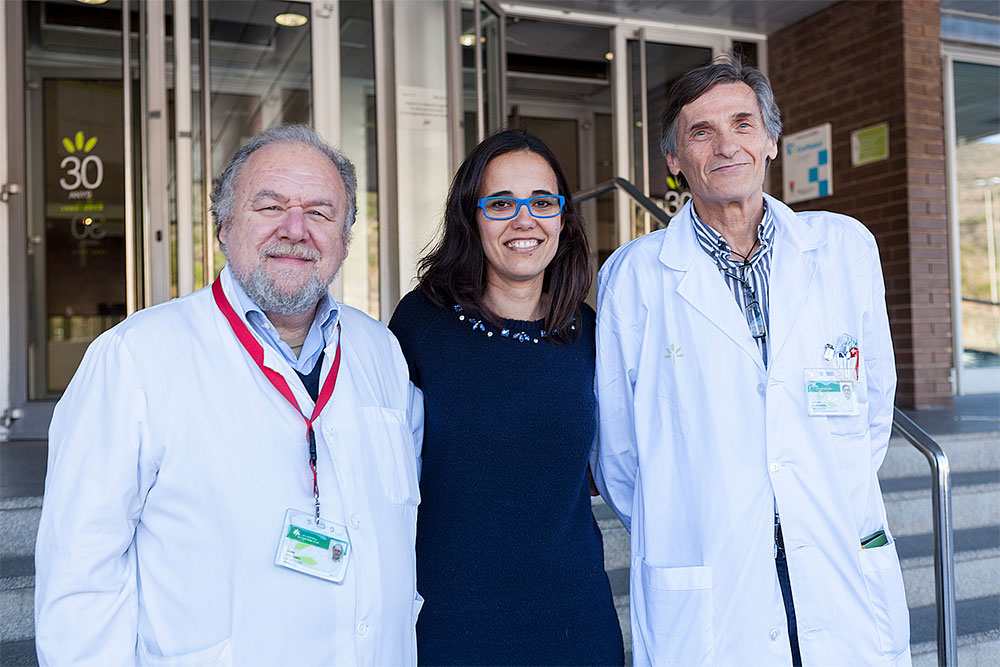Supervised exercise regimes drastically reduce symptoms for McArdle’s disease patients

The Neuromuscular and Neuropaediatrics Research Group at the Germans Trias I Pujol Research Institute (IGTP) has participated in a multi-centre study involving the largest group of Spanish McArdle's disease patients ever studied. McArdle's disease is a rare disease which causes patients to be intolerant of physical exercise and for which there is no treatment. The study, published in BMC Genomics, concluded that the best therapy is to adopt a supervised exercise regime.
Dr Gisela Nogales, group leader and corresponding author, Alfonsina Ballester (IGTP), Dr Guillem Pintos and Dr Jaume Coll of the IGTP and Germans Trias i Pujol Hospital along with researchers from other centres have built the largest register to date of McArdle patients in Spain, with more than 300 individuals. One of the main conclusions of the study is that 50% of the patients in the group saw a reduction in severity of symptoms over 4 years after adopting an active life-style with controlled and supervised exercise.
"This is a great step forward," says Dr Nogales, "It's a big improvement for the families of patients as they can lead a normal life."
Another finding of the study is the importance of educating specialists who work with children. Dr Nogales explains that "The tests and interviews with such a large group of patients have confirmed what researchers suspected; that McArdle's is a paediatric disease. We have seen many patients in the database with classic symptoms of fatigue and inability to do physical exercise during their school years." Most of these patients are diagnosed when they are 30 or 40, diagnosing earlier would allow patients to undergo controlled physical activity as a therapy.
The work has revealed new characteristics of the disease, but diagnosis is the next big challenge. At the moment what is known as "second breath phenomenon", where patients experience two phases when exercising, is the best diagnostic sign, this is followed up with genetic testing. Under supervision the subject must overcome the moment of fatigue when cardiac and respiratory frequencies increase after which they are able to continue exercising more easily. The change happens when there is a metabolic change in which the body starts to metabolize glucose entering into the blood stream, whether this comes from ingestion or is released from the liver.
The study has been possible due to the participation of Spanish reference centres for this disease: the Universidad Pablo Olavide, Seville, the Hospital 12 de Octubre, Madrid, the Hospitalario Universitario, Vigo Complex, Universidad Europea de Madrid, Vall d'Hebron University Hospital and the Vall d'Hebron Research Institute and the Germans Trias i Pujol Teaching Hospital and the Germans Trias i Pujol Research Institute.

